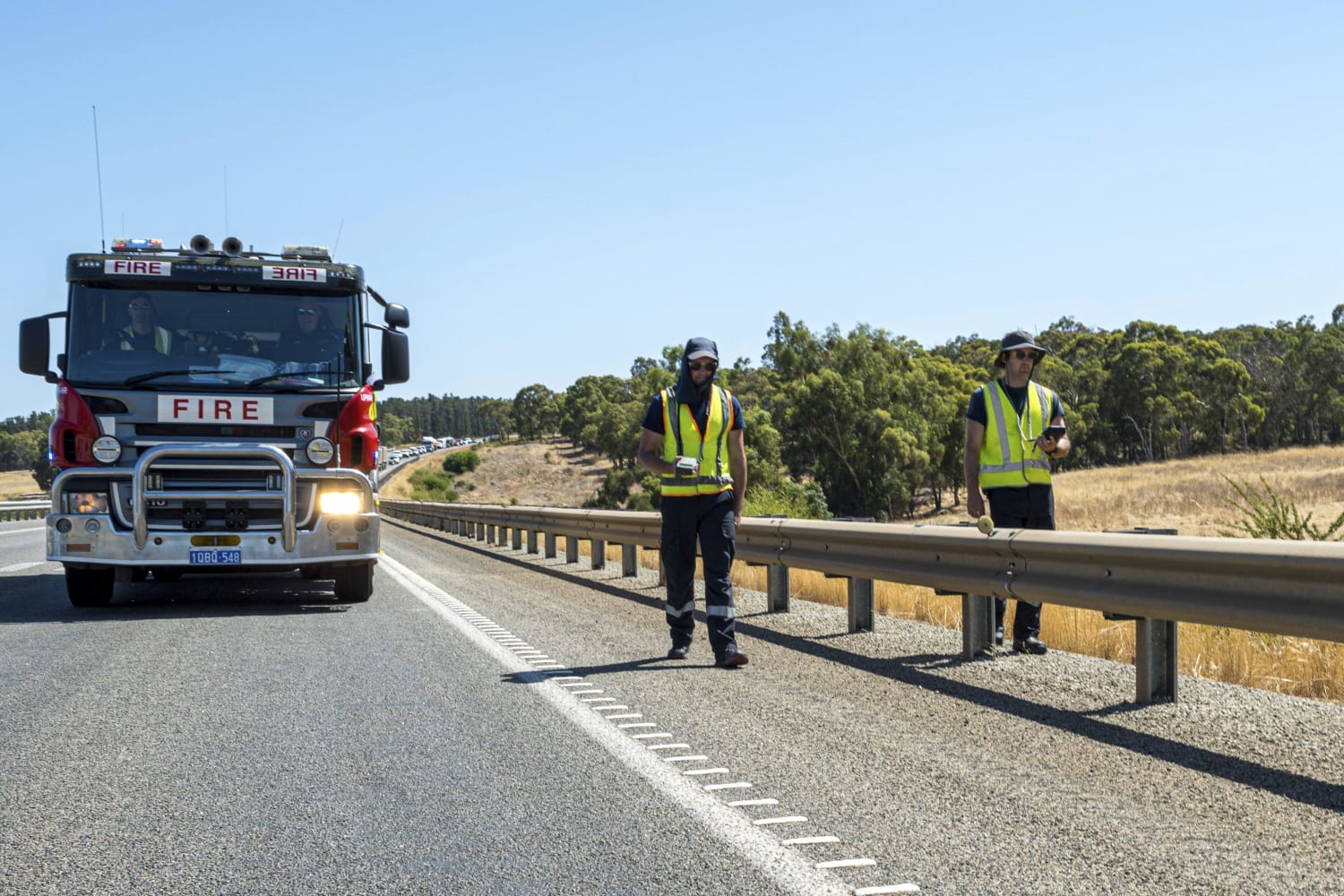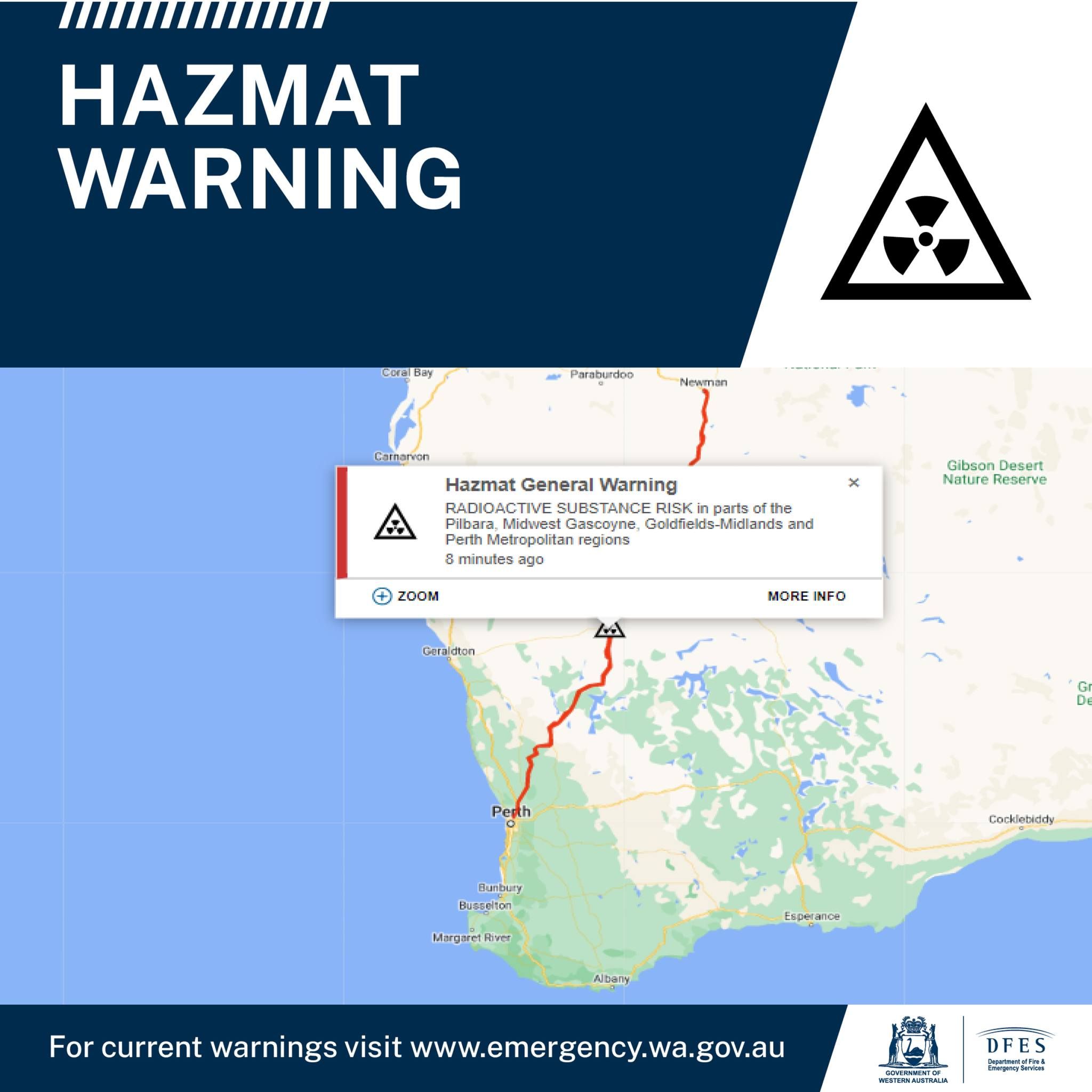Western Australia, an Australian state, is well-known for having a wealth of mineral resources, especially gold and iron ore. The mining industry has a sizable impact on the state’s economy.
Some of the largest and best-known mines in Western Australia include BHP’s Mt. Whaleback mine, Rio Tinto’s Hamersley iron mines, and Newmont’s Boddington gold mine.

Western Australia is conducting a quick search following the disappearance of a small capsule containing a radioactive substance.
Touching the casing could result in serious illness because it has a small amount of radioactive Caesium-137.
Some minerals that are taken out of mines, like uranium and thorium, contain radioactive materials.
The safe management, transfer, and storage of radioactive materials are governed by laws in Western Australia.

Businesses that operate mines containing radioactive mineral resources are obligated to obtain permits and follow strict regulations to protect the environment and employees.
To reduce the risk of exposure or unintentional release, radioactive elements’ transit is also monitored and controlled.
The tiny capsule was lost in mid-January between the towns of Newman and Perth, a distance of about 1,400 kilometers (870 miles).
The general public has been advised to avoid the capsule if they see it.
It went missing while being transported on a truck between a mine site in the Pilbara region, north of Newman, and the northern areas of Perth between January 10 and January 16. Caesium-137 is a substance that is frequently discovered in mining operations.
Caesium-137 (Cs-137) is a radioactive isotope that is produced by nuclear reactions and has a half-life of about 30 years. It is widely used in a variety of industrial and medical applications, but can also pose a health and environmental risk if not properly handled and disposed of.
As a byproduct of the processing of nuclear fuel, cesium-137 can be found in the context of mining and can also be a vital component of minerals like pollucite.
When transporting CS-137, special precautions must be taken to lower the risk of exposure. To ensure safe handling, these include the use of shielding, packaging, and labeling.

The regulations governing the transportation of radioactive materials vary from country to country and may be governed by international agreements, such as those established by the International Atomic Energy Agency (IAEA).
The capsule cannot be weaponized, according to the Department of Fire and Emergency Services (DFES), but it may result in radiation burns and longer-term risks like cancer.
According to Dr. Andrew Robertson, the state’s chief medical officer and chair of the Radiological Council, the object emits a “reasonable” amount of radiation.
They also mentioned that radiation from minerals and radioactive substances can be harmful to humans because it can cause ionization, which is the process of removing electrons from atoms or molecules.
This ionization can harm or kill body cells, which can result in diseases like cancer and genetic mutations. The type and amount of radiation, the frequency of exposure, the person’s age and health, and other variables all affect how severe the health effects will be.
If the radioactive element in a capsule is not adequately contained and insulated, it could release dangerous radiation into the environment and endanger both human health and the environment. To reduce the risk of exposure, the transport of radioactive materials is strictly regulated and supervised.
He stated, “We worry that someone will pick it up without knowing what it is.” If they think it’s interesting, they may decide to keep it, give it to someone else, keep it in their room, or keep it in their car.
DFES has made a drawing of the object, which is 6 mm by 8 mm in size and is available.
The locations where the transportation started and stopped have been investigated, and efforts are now being made to determine the precise route and stops that were made to focus the search.
The DFES is requesting that anyone who sees the object call them and, if they believe they have come into contact with it, get emergency medical care.
Also, read these articles.


